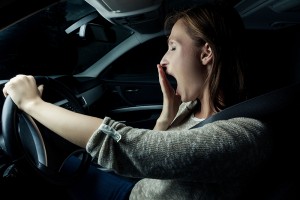 Drowsy driving is impaired driving, plain and simple. But far too many drivers don’t realize it or just don’t see it that way. It feels easy to justify getting behind the wheel when you’re too tired to drive, but you have to go to work. It seems totally different from choosing to drive drunk, for which most people agree there is no excuse. But in reality, it is just as dangerous and irresponsible.
Drowsy driving is impaired driving, plain and simple. But far too many drivers don’t realize it or just don’t see it that way. It feels easy to justify getting behind the wheel when you’re too tired to drive, but you have to go to work. It seems totally different from choosing to drive drunk, for which most people agree there is no excuse. But in reality, it is just as dangerous and irresponsible.
Some Facts about Drowsy Driving
- Researchers have found that being awake for 19 hours causes impairment comparable to having a BAC of .05% and being awake for 24 hours increases impairment to being comparable to having a BAC of .10%. A BAC of .08% puts you over the legal limit for driving in the U.S.
- According to the American Academy of Sleep Medicine, nine of 10 police officers surveyed reported stopping a driver who they believed was drunk but turned out to be drowsy.
- The Sleep Research Society tells us that 80,000 drivers fall asleep at the wheel every day, according to data from the National Highway Traffic Safety Administration (NHTSA).
- According to the Institutes of Medicine (IOM) nearly 20% of all serious injury crashes involve drowsy driving.
The Effects of Drowsy Driving
Drowsy drivers suffer from many impairments including:
- Impaired judgement
- Decreased reaction time
- Decreased awareness
- Impaired vision
- Poor short-term memory
- Difficulty with information processing
- Irritability
- Increased aggressive behaviors
Not only does fatigue impair your judgement when you are behind the wheel, it impairs your ability to recognize when you are too tired to drive.















